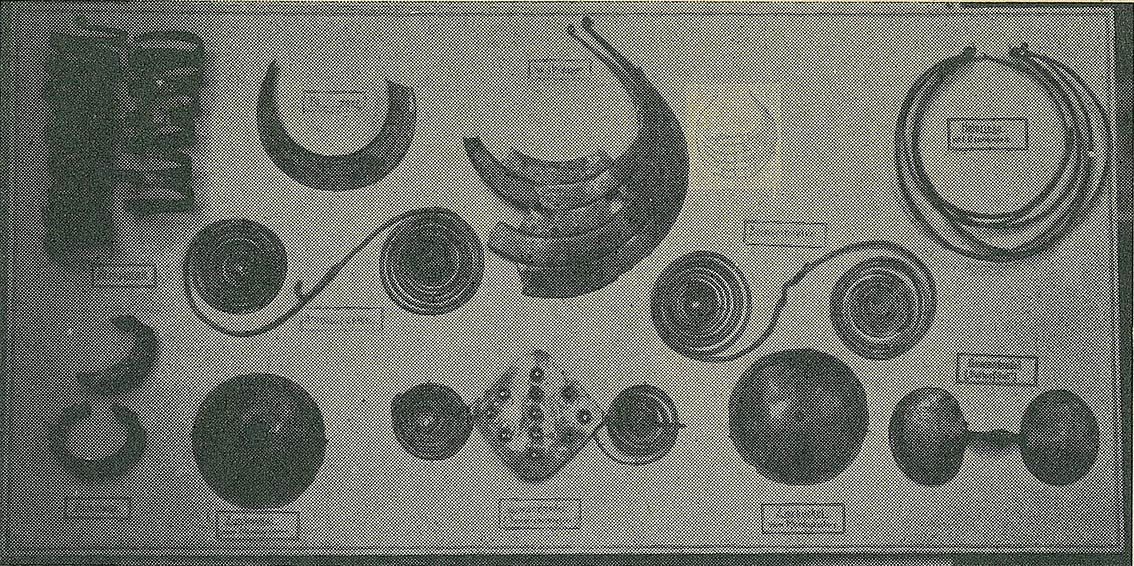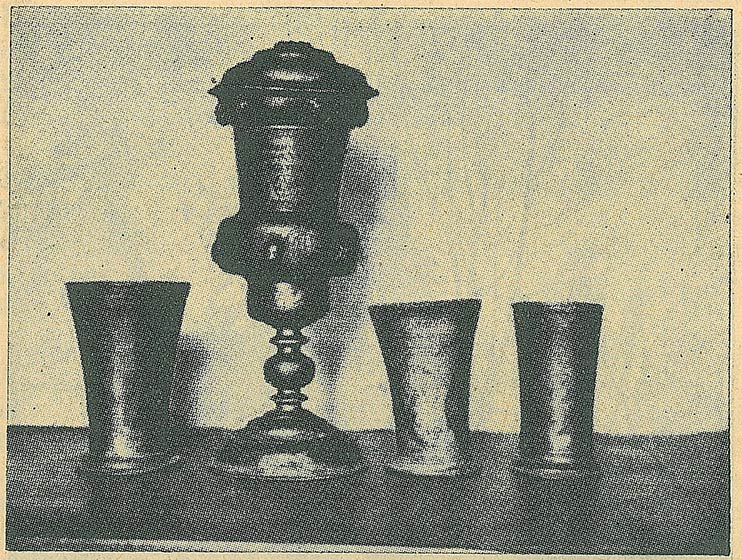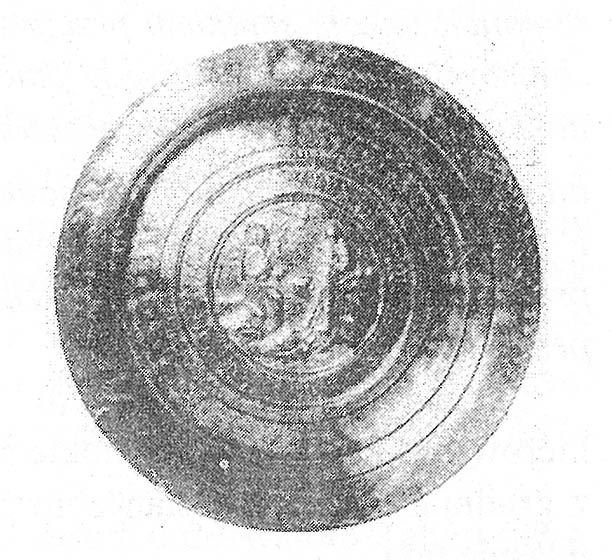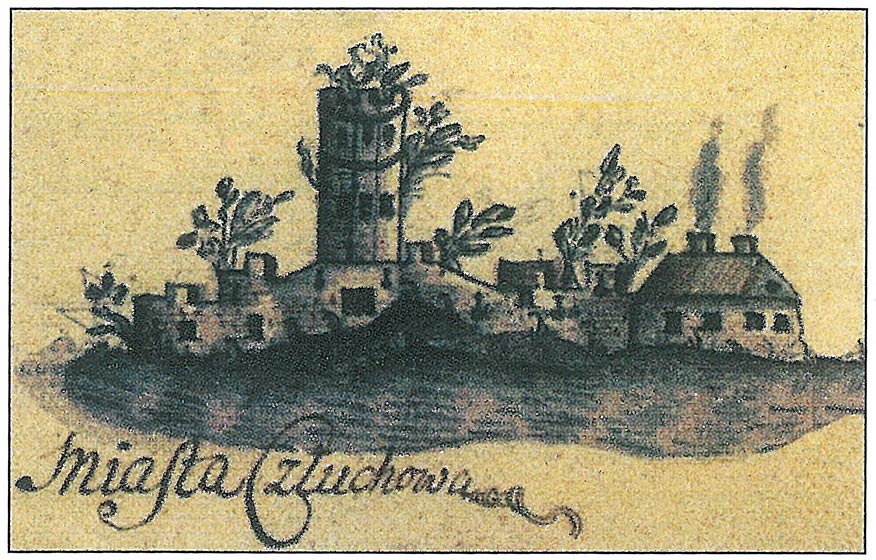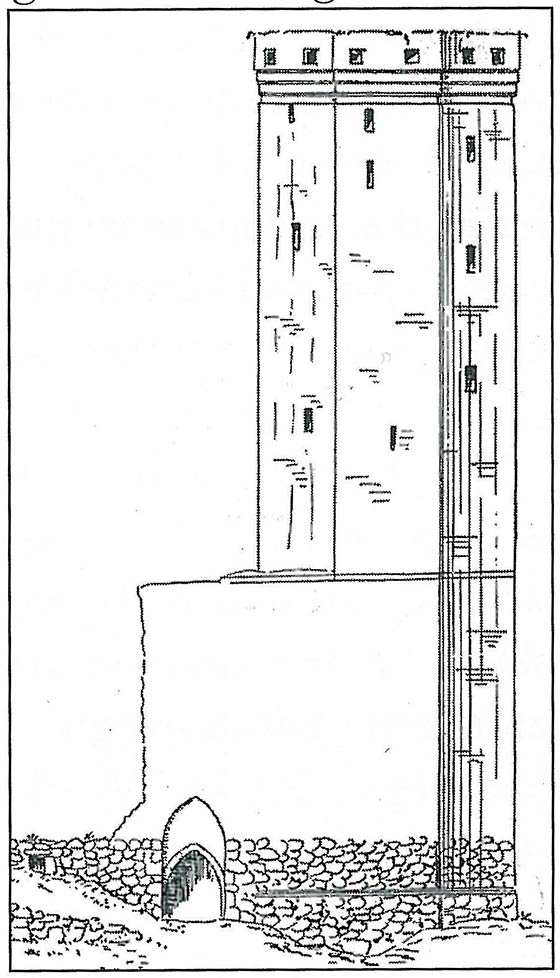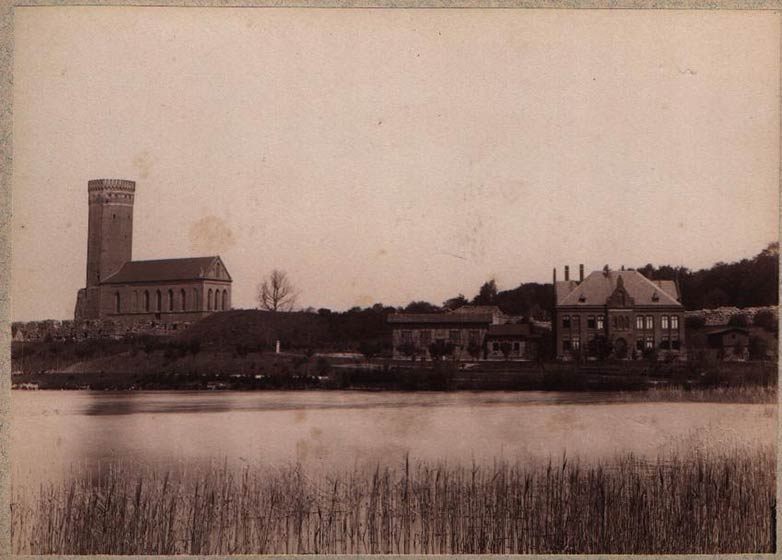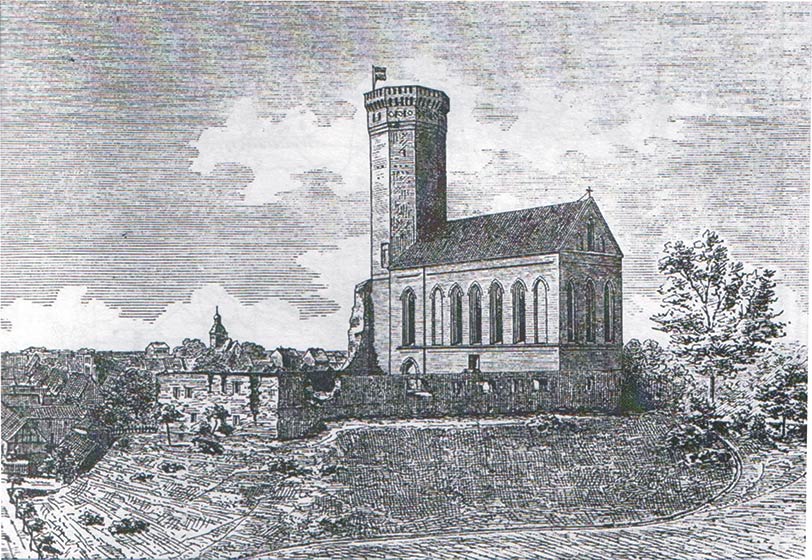Statue
- Details
- Category: Kontent główny
History of the museum
The commencement of museum provision in Człuchów dates back to 1911, when, by order of the head of the Człuchów County, a museum chamber was set up in the district office building (which currently houses the seat of the Municipal Office in Człuchów). In its two rooms, the museum mainly displayed items of archaeological heritage donated by local collectors.
Based on these acquisitions and subsequent collections, accumulated by collectors and socially involved citizens, the Regional Museum of Człuchów was opened in the district office building in 1927. In 1933, the seat of the museum was moved to a school which prepared students for teacher seminars (currently it is seat of the Community Council in Człuchów). The museum exhibition was displayed in seven rooms, with three rooms housing archaeological items arranged chronologically. These mostly included stone axes and hatchets, horn hoes and clay urns that had been found during archaeological excavations around the county. Another room exhibited a scale model of the castle made according to the reconstruction by Conrad Steinbrecht from 1920, as well as stone and iron ammunition balls found while cleaning the castle moats. One of the exhibitions focused on the development of Człuchów craft guilds; another presented firearms and melee weapons. The final display featured exhibits of the local fauna and flora.
1. Archaeological exhibits displayed at Człuchów Museum. The 1930s. Photo courtesy of the Archive
2.Tin casting products displayed at Człuchów Museum. The 1930s. Photo courtesy of the Archive
3.Bronze bowl from the collection of Człuchów Museum. The 1930s. Photo courtesy of the Archive
During World War II, the collection of the Heimatmuseum in Człuchów was destroyed and dispersed.
In 1963, a group of regional history enthusiasts founded the Society of Człuchów Land Enthusiasts, whose primary objectives were to set up a museum chamber and then establish a museum. In June 1964, a museum chamber was arranged and opened in a small room in the gallery of a former evangelical church erected on the foundations of the castle chapel. The exhibition was based on heritage items from private collectors. Soon afterwards, in 1967, it was redesigned in response to the 500th anniversary of the Second Peace of Thorn. The exhibition ceased to exist in 1971.
In the late 1960s, the District Community Centre in Człuchów took over the supervision of activities related to collection of exhibits and protection of heritage of the Człuchów County. In 1975, a position responsible for museum-related matters was created in the District Community Centre and given to Edmund Kloskowski, a historian specialising in the history of the Człuchów County and country lore, who later became the first director of the Regional Museum in Człuchów.
On 2 January 1976, after many years of preparation, the Regional Museum was established at al. Wojska Polskiego 3, in a building where the seat of the District Office had been located until 1907.
Between 1986 and 1990, the historic manor house underwent complete renovation. A basement was added, and the exhibition and storage space was increased. The first displays in the new location were opened to visitors on 24 June 1993. In 1993–1998, the museum was part of the organisational structure of the Municipal Community Centre in Człuchów.
Since 1 January 1999, following a resolution of the Town Council in Człuchów, the Regional Museum has been an independent cultural institution financed from the budget of the Człuchów Municipality.
On 2 May 2013, the seat of the museum was moved to its branch at Człuchów Castle.
The Regional Museum in Człuchów collects heritage items related to the history of Człuchów and the region.
The Archaeology Department comprises exhibits related to the earliest history of the Człuchów County. Most of them were found during excavations near Lake Krępsko, Lake Szczytno, and burial grounds of people of the Pomeranian culture (650–400 BC) in Olszanowo, Sąpolno and Gwieździn. Many of the exhibits were exposed in excavations at the castle hill in Człuchów.
The Ethnographic Department focuses on the material culture of Gochowie, a Kashubian people (today’s gmina of Lipnica) who, despite intense cultural Germanisation in the 18th and 19th centuries, have survived in the north-eastern part of the Człuchów County within its historic borders. The department exhibits utensils used in food preparation, flax and wool processing, farming and husbandry as well as furniture and household items. Particularly interesting items include moulds for butter decoration, churns, chests, spinning wheels and a dowry box.
The most valuable art and craft exhibits in the museum collection include: a Gothic sculpture of Saint Margaret (15th century?) from a parish branch church in Słupia, a Baroque wardrobe dated 1676, veneered and richly inlaid with intarsia, from a manor house in Koprzywnica, and a set of sculptures from a church in Gwieździn. The Art & History Department features many military items: armour and weaponry elements, including 17th-century chainmail, a cuirassier’s breastplate, swords, halberds as well as firearms, products from the Potsdam Manufactory, flintlock pistols from the 17th and 18th centuries, and caplock pistols from the 19th century.
The exhibits are displayed as part of the following permanent exhibitions: Early history of Człuchów Land, Archaeological excavations at the castle hill in Człuchów, Handicraft of the 15th to 20th century, History of Człuchów Castle.
Museum visitors can enter the castle tower and the courtyard, which was uncovered during several archaeological seasons, along with the basements under the east and south castle wings.
The museum also holds temporary exhibitions to display collections from other museums, institutions and private collectors. Educational activities include museum lessons, workshops, competitions and an urban game.
- Details
- Category: Kontent główny
Home EN
- Details
- Category: Kontent główny
History of the castle
Człuchów Castle was one of the largest defensive structures erected by knights of the Teutonic Order. It occupied an area of 3 hectares, and was second in size only to the Grand Master’s castle in Malbork, the seat of the Teutonic State. The castle in Człuchów comprised three outer baileys and the High Castle; each of them could act as a separate defensive unit if needed. The different parts of the castle were accessible across drawbridges constructed over water-filled moats; only the moat around Outer Bailey III was not filled with water.
Built on a square plan, with each side 47.5 m long, the four-wing High Castle was the most important part of the stronghold. Each wing was at least three storeys high, comprising the cellars, the low ground floor and the high storey located above, topped by the garret storey. Overlooking the other buildings was a huge eight-sided tower situated in the north-western corner of the High Castle. Entrances to the tower were located on the wing garret level. The north wing housed the chapel; the east wing housed the chapter room, where monks gathered for meetings; the south wing housed the dormitory, a shared bedroom for monks; and the west wing housed the refectory, where meals were taken. The cellars and higher storeys housed storerooms, armouries, the commander’s mill and, during the Polish period, a brewery. The buildings enclosed a square courtyard surrounded by galleries.
The vast size of Człuchów Castle was motivated by the important strategic and representative role it played in the Teutonic State. As part of the fortification system of the state’s southern border, it was an important defensive location. Moreover, it was located on a route used by guests of the order heading to the main Teutonic centres. Człuchów was where at least some of them witnessed the might of the Teutonic State for the first time. The construction of the castle began after 1312, when the order purchased Człuchów from sons of Mikołaj of Poniec (the last Polish castellan in Szczytno), and was probably completed around 1365. The settlement below the enormous stronghold developed quickly. On 19 June 1348, Człuchów was granted municipal rights. Its vast size was a result of the important strategic and representative role it played in the Teutonic State. As part of the fortification system on the southern border of the Teutonic territory, it was an important defence point in this part of the state. . In this period, the outer baileys housed stables, where horses were kept for knights of the order and their guests. The outer baileys also housed workshops, quarters for mercenaries, granaries and storehouses which made the castle independent in terms of provisioning and craft production. There was also a large arsenal of firearms and artillery, including cannonballs and a large number crossbows and bolts. The military significance of the castle was particularly felt throughout northern parts of Greater Poland and in Kuyavia, which were raided by the Teutonic knights led by the commander of Człuchów and Tuchola. They took military action against the Kingdom of Poland independently of the main Teutonic forces. In late February of 1454, at the beginning of the Thirteen Years’ War, the castle came under Polish command, and Człuchów became a royal town and the seat of the county office in 1466. For 300 years afterwards, the massive stronghold stood sentinel on the north-western border of Poland, which was just 20 km west of Człuchów. Towards the end of the First Polish Republic, it lost its strategic significance, and the castle buildings fell into disrepair.
1. Silhouette of the castle in the Człuchów Starostwo inventory record book from 1753
Following the fire of 1793, King Frederick William II allowed the residents to dismantle the castle and use the reclaimed bricks for rebuilding their burnt-down houses.
2. Picture of the castle tower, evangelical church and remnants of the castle walls, 1892
The enormous tower of the High Castle (46 m), which affords a view of the town and its surroundings, bears witness to the former glory of the fortress. In 1826–1828, an evangelical church was constructed on the foundations of the castle chapel, and the tower was converted into a belfry. In 1844, the crown of the tower was changed into high crenellations. To provide access for the bell-ringer and tourists, an entrance was knocked through at the bottom of the tower and a wooden stairway was constructed.
3. Picture of the castle tower, evangelical church and remnants of the castle walls, 1892
4. View of the evangelical church in the old High Castle in Człuchów, early 20th century
In 2008–2015, as part of a revitalisation project co-financed under the European Regional Development Fund, archaeological excavations and restoration works were carried out on the site of the castle compound.
Since 2 May 2013, the renovated castle has been administered by the Regional Museum in Człuchów.
- Details
- Category: Kontent główny
Contact
Regional Museum
al. Wojska Polskiego 3
77-300 Człuchów
tel./fax +48 59 83 42 586
e-mail: This email address is being protected from spambots. You need JavaScript enabled to view it.
- Details
- Category: Kontent główny

